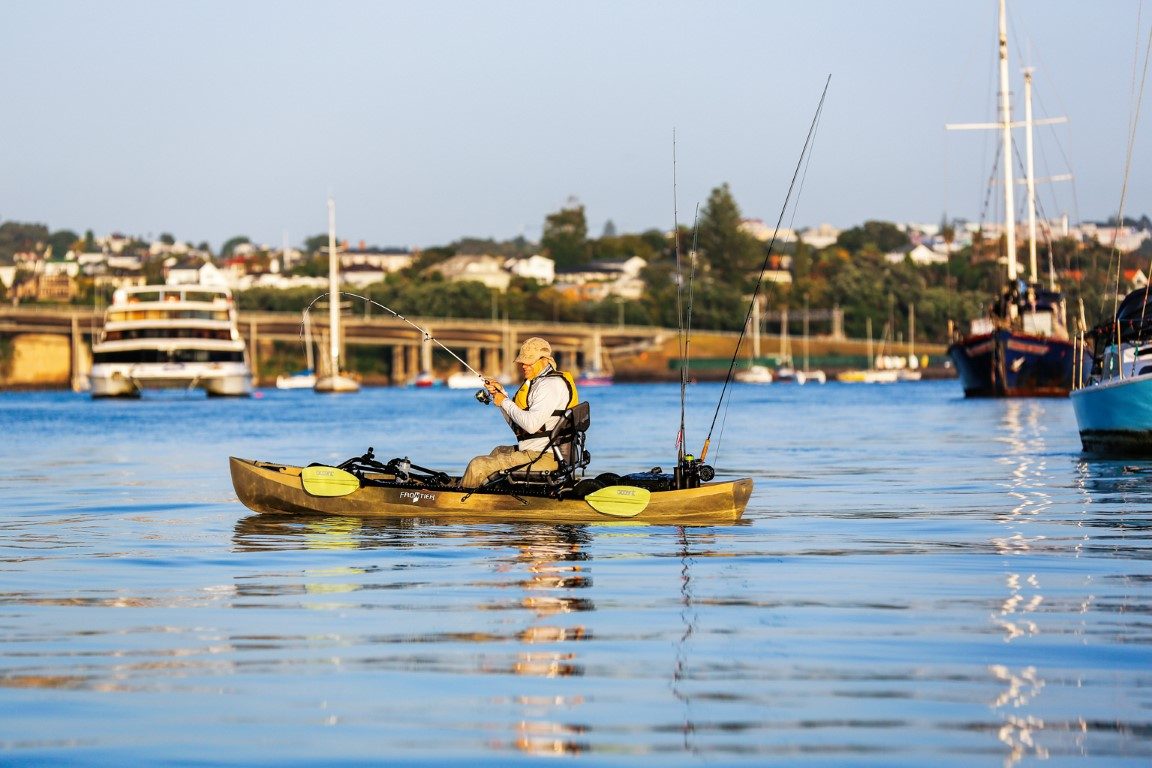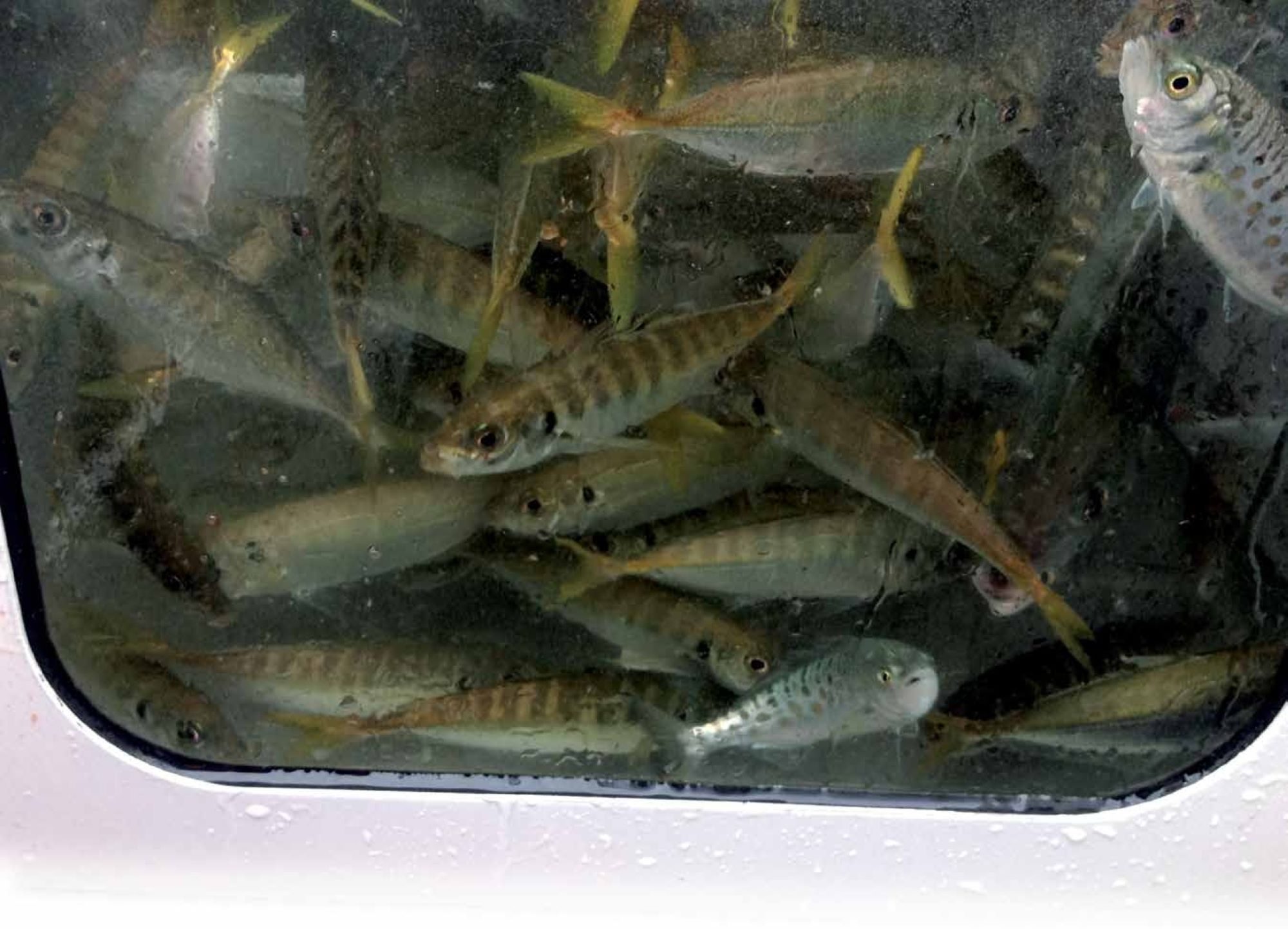

One of the realities of a monthly magazine is that there is quite a bit of lead time. That means the fishing I’m enjoying in November as I write this column will be a distant memory in mid-December when the magazine comes out, let alone in January.
I mostly fish for snapper, ’cos let’s face it, in Auckland it’s pretty much snapper, snapper and more snapper… I also catch a few kahawai, trevally, gurnard, kingfish and other odds and ends, although usually by accident while fishing for snapper, but like most northern anglers, snapper is the main target species.
Spring is the golden time for snapper fishers. I’m still enjoying wonderful spring fishing for snapper on their annual spawning run. As usual, October and November have so far produced my biggest snapper and best fishing since, well… last spring.

As I write, snapper fishing is excellent where I always fish at this time of year, but the water is warming fast. It’s around 1°C warmer than normal due to La Niña, and the fish are already well along with spawning. The catch is a mix of scruffy-looking spent fish, partly spawned snapper full of eggs and milt and fat pre-spawn beauties getting ready for their turn.
But when this magazine comes out, the situation will be very different. The main spawning run will be well over and the snapper aggregations spread far and wide to feed and regain condition, although groups of fish will continue gathering to spawn well into the summer if conditions are favourable.
SUMMER FISHING
By January, typical summer fishing will prevail, with hungry snapper inside the harbours and estuaries and roaming well inshore, as well as setting up on deeper reefs and around offshore islands. In the middle of the Hauraki Gulf, work-ups will have tapered off somewhat, but they could contain seasonal visitors like tuna, as well as kingfish kahawai and snapper.
In general, snapper bite readily and feed more often and for longer in summer. Concentrated in defined, relatively small, hard-to-find areas when spawning, snapper are far more widespread in summer, which makes them more accessible to recreational fishers. Unlike spring, in summer you can catch snapper pretty much anywhere.

That said, some planning and a fair bit of perseverance may be required: snapper might be present everywhere, but they can also be spread relatively thinly. Fortunately, snapper is a schooling species, so if you locate one there will usually be others nearby.
One of the challenges recreational fishers face at this time of year is the effects the sheer volume of recreational boating activity have on the fishing. Catching fish can be particularly challenging at popular coastal holiday destinations where boat traffic, not to mention noise and disturbance from PWCs, kayaks, paddle-boarders, skin-divers, kayakers and swimmers chase fish away from inshore areas.
In addition, increased recreational fishing effort causes local depletion (think crayfish) and disturbs feeding and migration patterns. Close to Auckland, these conditions exist year-round, but are far worse in summer when people take to the Hauraki Gulf in tens of thousands.
AVOID THE CROWDS
To be consistently successful during the holiday season, avoid the crowds as much as possible. That might mean fishing very early or very late in the day, both good tactics where snapper is concerned, or be prepared to travel to less popular areas. Closer to home, seek out quieter nooks and crannies no-one much bothers with.
By focussing your efforts on periods of low light, you are more likely to find fish that are happy to feed. They feel safer out of the glare of the sun, especially in shallow water, and disturbance from other water users is less at those times of the day. Snapper, like many other fish, also naturally feed at dawn and dusk.

Stealth becomes doubly important during the holiday season, especially in shallow water. I’m sure fish become accustomed to boat noise and other disturbances over time, but keeping noise to a minimum certainly helps your chances of catching fish.
As someone who fished from a small dinghy for many years, often tucked up a tidal creek or anchored on a sand flat at high tide, I learned the value of quietness. A dropped knife hitting the floor of the aluminium dinghy could be enough to put snapper off biting for half an hour or more.
GET SUBTLE
Finesse also improves your fishing success. When fish are nervous, they are less likely to feed enthusiastically and be far more wary of anything strange or unusual, including your bait or lure. Terminal tackle that’s bulky or unnecessarily obvious can actually scare fish off, so too can poorly-rigged baits, so take the time to rig your bait to look as natural as possible.
Fishing light line, minimal weight and lighter gauge hooks will often produce bites, as will changing down to lighter leaders when fishing lures. For summer soft baiting, I’ll sometimes go as light as 5kg leaders to get bites. Natural-looking soft baits often work better in summer than more garishly-coloured models and I prefer smaller 5-inch baits most of the time, but larger soft baits sometimes trigger bigger fish to bite.

For bait and lure fishing, consider using fluorocarbon instead of nylon for traces and leaders – you’ll get a lot more bites.
If you’re bait fishing, don’t forget the berley, dispensed at the surface if the water’s shallow enough, or deeper in the water column with a berley cage or similar. Berley will attract and hold snapper near the boat so you can present them with your baits.
FRESH BAIT
Fresh bait is always worthwhile if you’re bait fishing. Use yesterday’s leftover bait as berley, by all means, but don’t be tempted to use it as your hook bait. Fortunately, frozen bait is generally good quality these days and modern chilly bins do a great job of keeping bait (and the catch) in good condition onboard. Once bait is thawed, though, it should be used as soon as possible. Bait spoils quickly in summer heat.
I’m a big fan of freshly-caught bait i.e. bait you catch yourself.
When I lived in Whangarei 30 years ago, we used to start every fishing day with a quick stop at one of the harbour’s many bays. It was usually only a matter of a few minutes work dragging the piper net to get enough fresh bait for the day. Piper was and is great bait, with the added bonus that kingfish love it dead or alive, provided it’s fresh.
Sometime piper would elude us, but we could always catch some yellow-eyed mullet in the net. These make great snapper bait when used fresh, either whole or as cut/filleted baits. The odd grey mullet was a happy bonus – also excellent bait.
These days I don’t ‘do’ netting and anyway, good quality bait is available for sale everywhere, but I pack bait flies every trip to catch jack mackerel to use for bait. They can often be found in relatively shallow water early in the morning, or fish them out of your berley trails through the day. Rigged dead or alive, jack mackerel make excellent big snapper baits. Kingfish love them too, especially alive.

Fishing with live bait is another good tip for summer fishing, especially if bites are slow in coming. Like many other species, snapper find live baits hard to resist. A live bait kicking on the line can be enough to overcome a snapper’s summer wariness and it’s also attractive to kingfish, john dory, kahawai and several other species.
Live jack mackerel are primo baits, but even live yellowed mullet work well. Sometimes you need to show wary fish something different to get a bite – a live, wounded bait fish flicks all the right switches in a predatory fish’s brain.
So if the time of day is right, there’s not too much traffic around and you’ve used suitable tackle, rigs, baits or lures, summer snapper should snap up your offerings wherever you are this holiday period.




